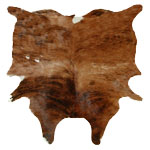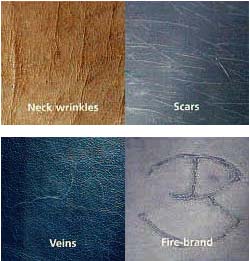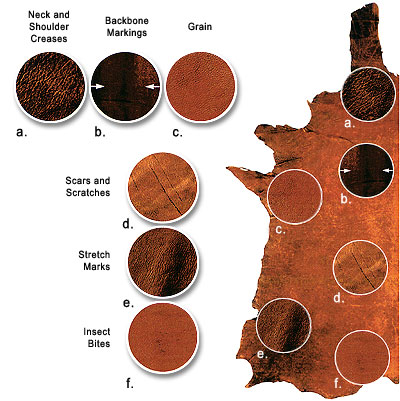Natural markings of leather
- by Super User

Leather is a natural product, and like anything natural it is not always perfect. It is this natural imperfection that attracts the leather fanatic. Leather will have markings that are considered natures signatures, and this is what relates to the public that the product is genuine leather.
Colour variations also occur in aniline leathers. During the dyeing process, since pigments are not used, each hide absorbs the dye in varying amounts, much like wood varies when stained. The handle of a bag may have a slightly different shade than the pockets, because both pieces were cut from different parts of the hide, this is not a material defect, but evidence that it is natural leather.
 |
 |
INSECT BITES
Occasionally cattle are attacked by small insects which leave the marks of their bites in the hides, these occur as tiny cuts on the leather surface
SCRATCHES
These are the result of the cattle being scratched in one way or another.
NECK BURNS
Cattle like to scratch their necks on the rails of fencing. This scratching can result in a neck burn if the cattle scratch too hard or very often.
MANURE BURNS
Cattle sometimes get manure on their hides. Since this is a very irritating substance, it can result in a burn on the hide if the cattle cannot remove the manure soon enough.
HOLES
Holes are usually man-made. They are the result of removing the skin to gain access to the meat.
BARBED-WIRE or OPEN-WOUND HEALED SCARS
Sometimes the cattle get their hides caught in barbed wire. This results in a tear in the hide. These healed scars, however, are just as durable as the parts of the hide that arent scarred. These marks help to differentiate real, natural leather from its substitutes
CREASES
These appear in the neck areas of the hide, Because of their heavy grained effect, they will appear as textured lines in the smooth hide
GROWTH MARKS
Reveals the age of the leather, as with scars, growth marks really do show off the full bodied character of real leather




